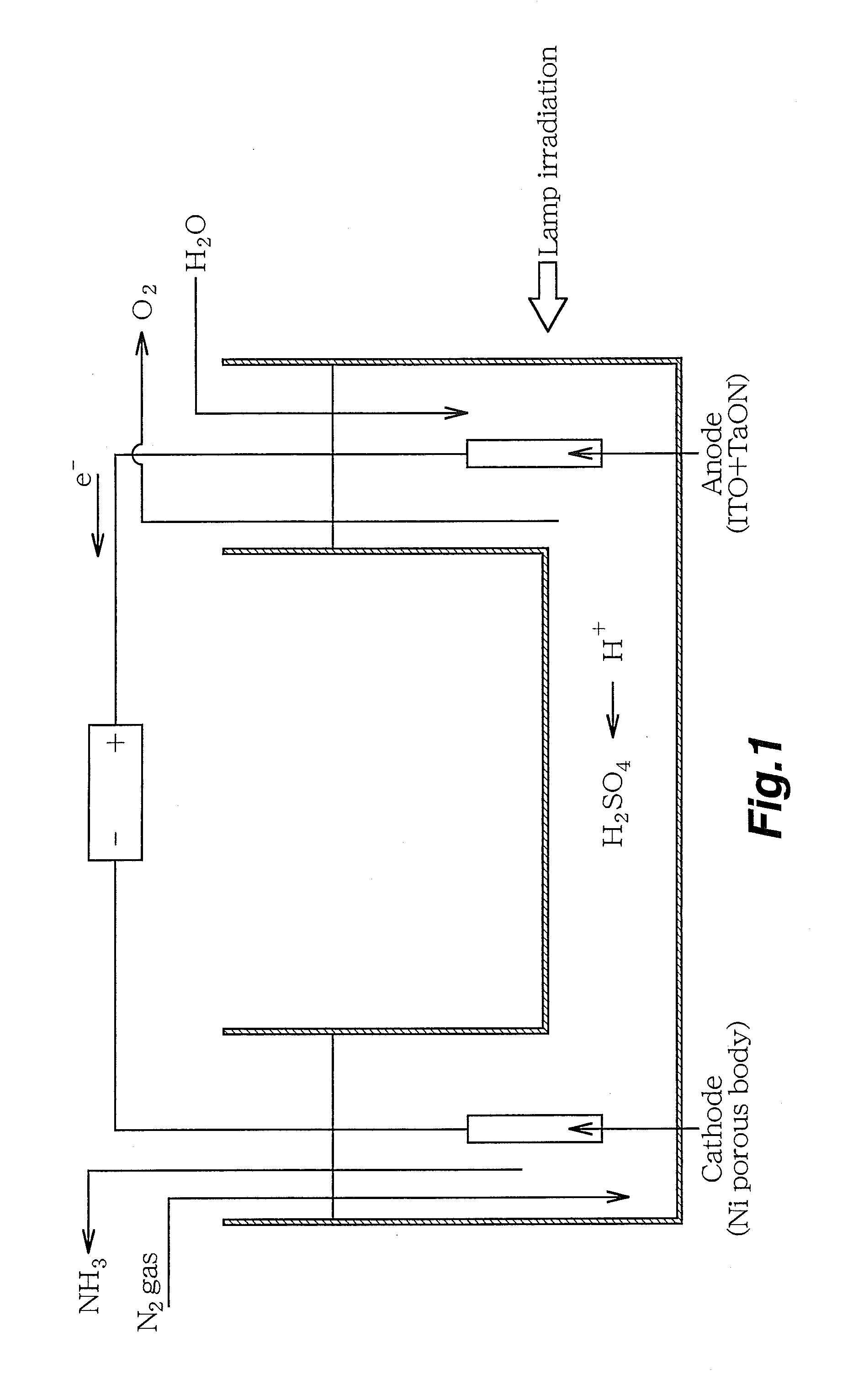Method for synthesizing ammonia
a technology of ammonia and ammonia gel, which is applied in the field of ammonia synthesizing ammonia, can solve the problems of high high cost of ammonia production, and high environmental load due to carbon dioxide (cosub>2/sub>) emissions, etc., and achieves high efficiency, energy consumption and facility scale required are small, and excellent economic
- Summary
- Abstract
- Description
- Claims
- Application Information
AI Technical Summary
Benefits of technology
Problems solved by technology
Method used
Image
Examples
example 1
[0035]First, 0.002 N aqueous solution of sulfuric acid (H2SO4) was used as an electrolyte of an electrolyte phase. Indium tin oxide (ITO) was used as a substrate for an anode, and a visible light-responsive photocatalyst TaON as a photocatalyst was loaded onto an ITO substrate by application. In addition, a Ni porous body was used as a cathode.
[0036]Then, in the electrolyte phase, the anode provided with the photocatalyst and the cathode were arranged at a predetermined interval, and visible light was radiated at 300 W with a xenon lamp in an anode zone while supplying water (H2O). By this procedure, water was decomposed by a photocatalytic reaction in the anode zone, thereby generating protons (H+), electrons (e−) and an oxygen gas (O2).
[0037]Meanwhile, a nitrogen gas (N2) was circulated at a flow rate of 100 ml / min in a cathode zone.
[0038]A voltage of 2.8 to 3.4 V was applied between the electrodes, and an ionic conductivity at that time of the electrolyte was measured. By this pr...
PUM
| Property | Measurement | Unit |
|---|---|---|
| diameter | aaaaa | aaaaa |
| temperature | aaaaa | aaaaa |
| pressure | aaaaa | aaaaa |
Abstract
Description
Claims
Application Information
 Login to View More
Login to View More - R&D
- Intellectual Property
- Life Sciences
- Materials
- Tech Scout
- Unparalleled Data Quality
- Higher Quality Content
- 60% Fewer Hallucinations
Browse by: Latest US Patents, China's latest patents, Technical Efficacy Thesaurus, Application Domain, Technology Topic, Popular Technical Reports.
© 2025 PatSnap. All rights reserved.Legal|Privacy policy|Modern Slavery Act Transparency Statement|Sitemap|About US| Contact US: help@patsnap.com


